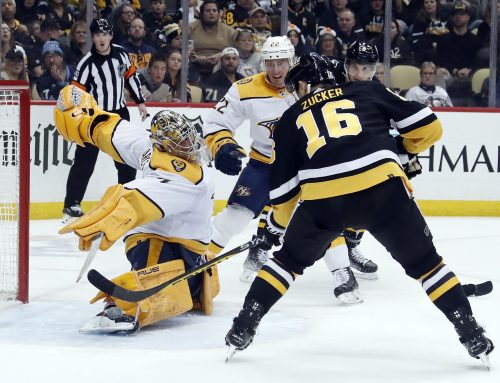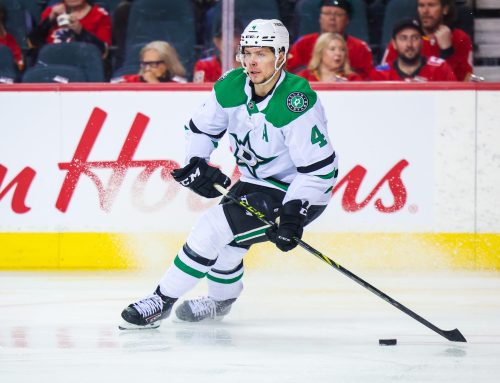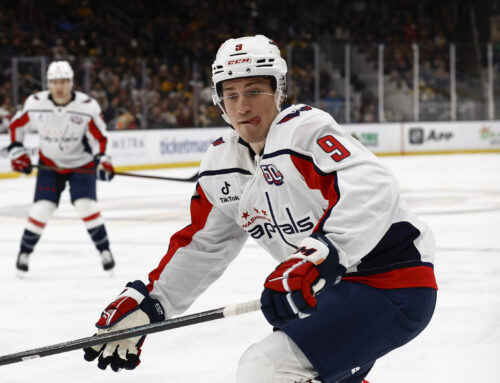
Three strategies to take help take advantage of the Olympic break in your cap league.
The Olympic break represents an unusual time in fantasy hockey. For more than two weeks the NHL shuts its doors which means your fantasy league also ceases operations during this time. Think of it as a short offseason that happens to be in the middle of an ongoing season. Even though there are no NHL games at the moment this is still a very important time in your quest for a championship.
The timing of the break is very interesting. All teams have played between 57 and 60 games so far. If your league has a trade deadline it is probably in the not-too-distant future. While your mind is not caught up in the chaos of setting daily lineups, this is a great time to start planning ahead. In cap leagues, the financial aspect adds a thick layer of complexity both in player evaluation but also in the bigger picture of building a winning team.
Talking Trade
One thing you have probably noticed in your own league is that many of your rivals are more eager than ever to talk trade. Meanwhile, others are more or less checked out at this point and appreciating some time away from fantasy hockey. This can help you in two ways: some of the more active GMs can be too eager and make poor decisions and the absence of a portion of your league means that you have fewer owners bidding against you on the trade market.
When you talk trade with your rivals, play to your strengths and to your weaknesses. If you have cap space and someone else needs to shed some salary, take advantage of the situation. The player he is giving up may not mean much to him if the finances are the dominating factor. But that does not mean that the player is not a highly-effective fantasy contributor. The outcome could be a perfect rental obtained at a minimal price.
Likewise, if a rival is looking to add immediate producers, it might be a good time to dangle one of your least efficient players. You may not get much in return, but the cap space that you save can perhaps be used more efficiently moving forward.
If your available cap space became free due to a major injury, the only danger in acquiring salary is having your ailing player return before the season ends. This especially holds true if your league has buyout penalties for dropping someone. Just be sure to get a feel for the recovery time of the injury before taking action.
Planning Ahead
In keeper leagues, this is a great time to look at your team’s finances for next year. Keep a spreadsheet with your main roster along with each player’s cap hit for the next few years. Here is an example using the NHL’s projected salary cap ceiling of $71.1 million next year:
|
Forward |
||||||
|
Player Name |
Position |
2013-14 |
2014-15 |
2015-16 |
2016-17 |
2017-18 |
|
Daniel Sedin (VAN) |
LW |
6,100,000 |
7,000,000 |
7,000,000 |
7,000,000 |
7,000,000 |
|
Chris Kunitz (PIT) |
LW |
3,725,000 |
3,850,000 |
3,850,000 |
3,850,000 |
|
|
Richard Clune (NSH) |
LW |
537,500 |
850,000 |
850,000 |
||
|
Tomas Plekanec (MTL) |
C |
5,000,000 |
5,000,000 |
5,000,000 |
||
|
Frans Nielsen (NYI) |
C |
2,750,000 |
2,750,000 |
2,750,000 |
||
|
Zack Smith (OTT) |
C |
1,887,500 |
1,887,500 |
1,887,500 |
1,887,500 |
|
|
Marian Hossa (CHI) |
RW |
5,275,000 |
5,275,000 |
5,275,000 |
5,275,000 |
5,275,000 |
|
Matt Read (PHI) |
RW |
900,000 |
3,625,000 |
3,625,000 |
3,625,000 |
3,625,000 |
|
Derek Dorsett (NYR) |
RW |
1,633,333 |
1,633,333 |
|||
|
Mathieu Perreault (WSH) |
C |
1,050,000 |
||||
|
Brian Boyle (NYR) |
C |
1,700,000 |
||||
|
Tyler Johnson (TB) |
C |
900,000 |
900,000 |
|||
|
Mark Scheifele (WPG) |
C |
1,563,333 |
1,563,333 |
1,563,333 |
||
|
Max Talbot (COL) |
RW |
1,750,000 |
1,750,000 |
1,750,000 |
||
|
Joel Ward (WSH) |
RW
📢 advertisement:
|
3,000,000 |
3,000,000 |
|||
|
Defense |
||||||
|
Player Name |
Position |
2013-14 |
2014-15 |
2015-16 |
2016-17 |
2017-18 |
|
Shea Weber (NSH) |
D |
6,678,570 |
6,678,570 |
6,678,570 |
6,678,570 |
6,678,570 |
|
Victor Hedman (TB) |
D |
4,000,000 |
4,000,000 |
4,000,000 |
4,000,000 |
4,000,000 |
|
Mark Stuart (WPG) |
D |
1,700,000 |
||||
|
Danny Dekeyser (DET) |
D |
1,350,000 |
||||
|
Adam Pardy (WPG) |
D |
600,000 |
||||
|
Torey Krug (BOS) |
D |
1,704,167 |
||||
|
Marek Zidlicky (NJ) |
D |
4,000,000 |
||||
|
Goalie |
||||||
|
Player Name |
Position |
2013-14 |
2014-15 |
2015-16 |
2016-17 |
2017-18 |
|
Roberto Luongo (VAN) |
G |
5,333,333 |
5,333,333 |
5,333,333 |
5,333,333 |
5,333,333 |
|
Purgatory |
||||||
|
Player Name |
Position |
2013-14 |
2014-15 |
2015-16 |
2016-17 |
2017-18 |
|
Pascal Dupuis (PIT) |
LW/RW |
3,750,000 |
3,750,000 |
3,750,000 |
3,750,000 |
|
|
Grant Clitsome (WPG) |
D |
2,066,667 |
2,066,667 |
2,066,667 |
||
|
Salary Cap |
64,300,000 |
71,100,000 |
||||
|
Payroll |
63,137,736 |
60,912,736 |
||||
|
Cap Space |
1,162,264 |
10,187,264 |
First, a couple notes. Pascal Dupuis and Grant Clitsome are currently out for the rest of the season due to injury. They do not count towards this year’s payroll but they obviously will next year. What this example boils down to is five roster spots and just over $10 million in space.
What you are trying to determine when you crunch these numbers together is whether or not you are in danger of going over cap in the offseason. If yes then you will have to address the problem either now or later. You will have a couple months to work this summer but it never hurts to see if you can create yourself some relief now. It certainly is possible to do so without hurting your team’s chances of competing now. You just have to be persistent and opportunistic.
If you wish to act now and shed some salary, the key is deciding which player to move. An effective approach is finding a player that is not giving you a good bang for the buck. This does not mean that he is not effective, it just means that his cost is greater than what he gives back. This could even be an aging player that is nearing or in the midst of a decline in production. Also, keep an eye on your pending free agents. As we have seen numerous times, some players simply get overpaid when they hit the open market in the summer.
Tricks of the Trade
There are good tools available to help assess league-specific player value. The best one is Fantasy Hockey Geek as most of you know. If you use Fantrax as a league host then you also get league-specific rankings on the site. While these tools only assess production during a fixed period of time and do not help in terms of future break-outs and declines, they do help eliminate the bias that we all possess towards points-heavy players that stand out in real life and in more basic pools.
The Bottom Line
Hopefully you all find a way to take advantage of the downtime to make key decisions regarding your fantasy team. The work you put into getting to know your team better can go a long way. Even if you do not resolve an upcoming salary cap issue immediately, having this knowledge can help you avoid putting yourself in a deeper hole. Knowing is half the battle.
Previously in Capped:





 EDM
EDM FLA
FLA MIN
MIN DAL
DAL T.B
T.B L.A
L.A CBJ
CBJ CHI
CHI S.J
S.J VAN
VAN VGK
VGK
